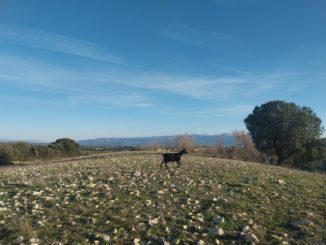
We are back in Trento, Italy, on the farm with Chiara Garini. This time she talks us through the challenges of making an agroforestry farm ecologically and economically viable in the long term. In particular, she stresses the many skills and approaches needed to be a successful agroecological farmer.
It is a stormy Sunday evening with strong Northern wind. I’ve only been away for the weekend but realise I am missing my fields. I’m starting to feel a real bond with the land and the soil. Coming from the fast-paced, urban context, the feeling of attachment to this land has been building up slowly for the last few years.
Is the soil where we transplanted the tomatoes lacking some nutrients?
How the prevailing winds affect our plants and mushrooms growth?
From the micro to the macro perspective, my attention to the land is growing into a deep understanding about its health and the best ways to take care of it. One day I might get close to the happy contemplative thought about land for the land expressed by the old Chinese peasant Wang Lung, (in the 1930s novel The Good Earth by Pearl Buck).
The emerging forest garden
The end of winter was dedicated to the design of the forest garden. After the top layer of fruit and nut trees was planted last autumn, we decided to postpone the design and planting of the shrub layer (apart from the shrubs in the hedgerows already planted last year) and to focus on the herbaceous layer. The shiitake forest farming is at its commercial kickoff this season but we need a couple of years more to scale up the production before it will be economically sustainable.
Meanwhile we are creating a forest garden and designing its future economic, aesthetic and socio-ecological shape. We have several ideas to make the forest garden economically viable in the future, including opening the field for public enjoyment and processing the diverse produce for sale.
The funding we recently received from the Province Rural Development Programme measure to help young farmers get started and some family funds gave us the chance to embark on this project. Our responsibility is now to make the farm economically viable in the long term but also to deal with necessary short term economic needs. To grow and sell directly our wide diversity of produce is surely not an easy task.

Our intention is to grow a mixed layer of herbaceous edible perennials among the scattered canopy and shrub layers in a dynamic process. While the canopy layer is developing, we are taking the opportunity to grow fresh specialty crops in the full sun area below it.
For this season we will rely on annual vegetables and herbs which we selected for their higher success rate over the past few years. We also planted a number of perennial aromatic herb species. Perennial plants required a more accurate design while for annuals we are already thinking about the species succession.
The unusual shape of the herbaceous bed – mostly different from the conventional straight lines – is the result of taking into account sun exposition, soil fertility, wind exposure, logistics and pathways, as well as aesthetics.
To increase the economic and ecological diversity of the farm we’ve also added a new mushroom species in our system. We’ve set up raised bed facing south on which we planted tomatoes. Behind them, on the north side, in the trenches which will be shaded by the tomato plants, we installed woodchip patches inoculated with the edible and marketable mushroom Stropharia rugosoannulata, the so-called garden giant.

This is experimental but if the conditions are alright we will have perennial mushroom patches scattered around our forest garden which will only require watering, some fresh woodchips before winter and harvesting. It is definitely worth a try.
Agroforestry, complexity and knowledge
We aim to build an experimental, small-scale intensive system which can be adaptable. Our approach is to add a diversity of species and organic material in order to increase the agroecosystem complexity and resilience to climate change, market fluctuations, political changes or other unexpected changes.
As you might expect, this way of farming requires multidisciplinary knowledge. In the era of overspecialization, building sustainable mixed farms that produce and sell a multitude of products might look impossible since gaining all the specific technical knowledge for each production chain seems like an insurmountable obstacle.
This widespread, excessively reductionist approach often leads to trenchant beliefs which paint alternative farming in a foolishly nostalgic, fairy-tale-like light. I see this attitude as a resigned acceptance which can lead to nothing better than clipping the wings of young generations, whose enthusiasm and creativity deserve more respect.
Envisioning and building multi-functional and diverse mixed farms is challenging work but it also allows greater levels of freedom in agronomic terms.
Agroecology is a systemic paradigm including farming practices, scientific research and politics. To move toward a desirable future farming and food system, we need to have greater debate throughout and between these domains. My impression is that often the debate gets stuck in definitions. Sustainability; organic farming; integrated farming; climate change adaptation; biodiversity conservation; circular economy, decarbonization, digitalization, greening …. and so on. These words and themes are crucial and must be at the core of scientific research and political disputes.
Still, now that I have positioned myself professionally in the hands-on farming sector I realize that I do not need to define or to be defined for the way I farm. Freedom and autonomy of thinking, designing and practicing agriculture feels like the greater battle to fight for.
Letter From The Farm | What worked from the 1st growing season?





